Checking codes is perhaps the most important step in diagnosing problems with your 5.0. It is free, easy, and effective.
Materials Needed
-a paperclip or a piece of wire approximately 3-10 inches
-pen and paper
*To get accurate results it is important that the car is fully warmed up
Step One
-Find the self-test connectors. They are located behind the driver side strut tower if your Mustang is a 1986-1993, and behind the passenger side strut tower if your Mustang is a '94-'95.
1986 - 1993 Mustangs VIP Connector Location
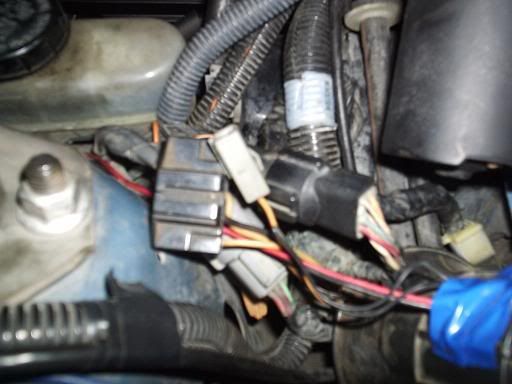
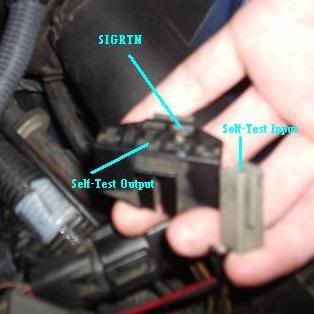
1994 - 1995 Mustangs VIP Connector Location
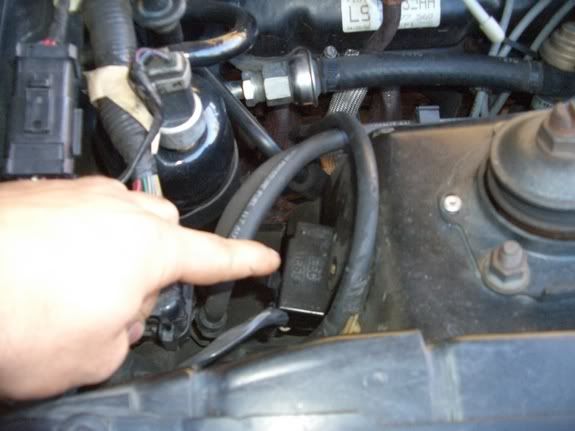
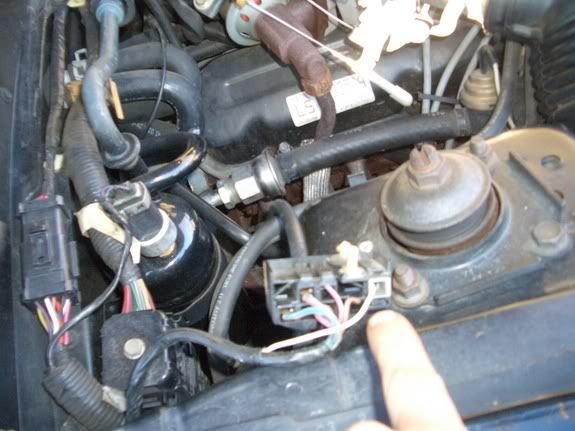
-Connect the Self-Test Input (the single wire connector) to the SigRTN (the top right "window" of the house-shaped connector) using the paperclip or the wire.

Step Two
-Now that the connection is made, grab your pen and paper and sit in the driver seat.
-Turn the key to the on position, but do not start the car. This will initiate the "Key On Engine Off" or KOEO Test.
-Keeping an eye on the Check Engine Light (CEL) you will notice a quick and brief series of flashes. These are not usuable for these tests.
-Next the CEL will flash slower codes. These codes are the ones we want, so its time to start counting them. The spacing of the flashes determines the number, for example: a code 67 would be shown as 6 flashes in a row, then a small pause, followed by 7 more flashes. Between codes is a longer pause. Each code will be repeated twice.
-When the KOEO codes stop, you'll notice a much longer pause and then a seperator pulse (a single "solid" flash).
-Now the Continuous Memory (CM) codes will flash. These codes are output essentially the same way as the KOEO codes.
Step Three
-after the CM codes are finished, turn the key to off for about 10 seconds, but leave the Self-Test connection hooked up.
-Now you will want to start the car. The idle will raise substantially and the CEL will flash four times in a row (indicating that you have eight cylinders)
-this will be followed by the Key On Engine Running (KOER) codes that are output like the previous tests.
Optional Testing
Cylinder Balance Test
-Immediately after all KOER codes have been output, a quick tap of the throttle will initiate the cylinder balance test.
-The codes shown are of a slightly different format, that is, they are multiples of ten. 10, 20, 30, 40, etc. for example 9 flashes would equal 90.
If you get no flashes from the Check Engine Light during the tests then something is not right.
-First you should check that you hooked up for the Self-Test correctly. If you find that you have set it up right then,
-It is possible that your Check Engine Light is not functioning. You can use a Volt meter or a test-light as shown in this diagram

-If your Gear Switch is faulty it may be necessary to run the tests with the clutch depressed.
-In the case of a broken SigRTN wire, a simple solution is to connect from the Self-Test Input to a good ground or the negative post on the battery.
-Some international models have the STI located directly below the SigRTN in the main self-test connector.
Clearing EEC-IV Codes:
1. Disconnect battery (-) terminal for 3-5 minutes.
2. The above will cause a code 15 (Keep Alive Memory (KAM) Test Failed) to be logged since power was removed from the system memory.
3. To clear this code (or any other codes) you could also use the alternate/quick procedure.
Alternate Procedure to Clear Codes:
1. Setup the system to run a KOEO self-test.
2. Turn Ignition On.
3. As soon as the codes start to flash, disconnect the STI jumper wire.
4. Turn Ignition Off, set the system to run a KOEO self-test again, and confirm code 15 is cleared from memory (CM codes).
This article was made with the contributions and material provided/available by/at:
* Joel5.0
* Neomustangs
* stang562
* www.veryuseful.com
* www.fordfuelinjection.com
* www.my5oh.com
* www.sbftech.com
Materials Needed
-a paperclip or a piece of wire approximately 3-10 inches
-pen and paper
*To get accurate results it is important that the car is fully warmed up
Step One
-Find the self-test connectors. They are located behind the driver side strut tower if your Mustang is a 1986-1993, and behind the passenger side strut tower if your Mustang is a '94-'95.
1986 - 1993 Mustangs VIP Connector Location


1994 - 1995 Mustangs VIP Connector Location


-Connect the Self-Test Input (the single wire connector) to the SigRTN (the top right "window" of the house-shaped connector) using the paperclip or the wire.

Step Two
-Now that the connection is made, grab your pen and paper and sit in the driver seat.
-Turn the key to the on position, but do not start the car. This will initiate the "Key On Engine Off" or KOEO Test.
-Keeping an eye on the Check Engine Light (CEL) you will notice a quick and brief series of flashes. These are not usuable for these tests.
-Next the CEL will flash slower codes. These codes are the ones we want, so its time to start counting them. The spacing of the flashes determines the number, for example: a code 67 would be shown as 6 flashes in a row, then a small pause, followed by 7 more flashes. Between codes is a longer pause. Each code will be repeated twice.
-When the KOEO codes stop, you'll notice a much longer pause and then a seperator pulse (a single "solid" flash).
-Now the Continuous Memory (CM) codes will flash. These codes are output essentially the same way as the KOEO codes.
Step Three
-after the CM codes are finished, turn the key to off for about 10 seconds, but leave the Self-Test connection hooked up.
-Now you will want to start the car. The idle will raise substantially and the CEL will flash four times in a row (indicating that you have eight cylinders)
-this will be followed by the Key On Engine Running (KOER) codes that are output like the previous tests.
Optional Testing
Cylinder Balance Test
-Immediately after all KOER codes have been output, a quick tap of the throttle will initiate the cylinder balance test.
-The codes shown are of a slightly different format, that is, they are multiples of ten. 10, 20, 30, 40, etc. for example 9 flashes would equal 90.
If you get no flashes from the Check Engine Light during the tests then something is not right.
-First you should check that you hooked up for the Self-Test correctly. If you find that you have set it up right then,
-It is possible that your Check Engine Light is not functioning. You can use a Volt meter or a test-light as shown in this diagram

-If your Gear Switch is faulty it may be necessary to run the tests with the clutch depressed.
-In the case of a broken SigRTN wire, a simple solution is to connect from the Self-Test Input to a good ground or the negative post on the battery.
-Some international models have the STI located directly below the SigRTN in the main self-test connector.
Clearing EEC-IV Codes:
1. Disconnect battery (-) terminal for 3-5 minutes.
2. The above will cause a code 15 (Keep Alive Memory (KAM) Test Failed) to be logged since power was removed from the system memory.
3. To clear this code (or any other codes) you could also use the alternate/quick procedure.
Alternate Procedure to Clear Codes:
1. Setup the system to run a KOEO self-test.
2. Turn Ignition On.
3. As soon as the codes start to flash, disconnect the STI jumper wire.
4. Turn Ignition Off, set the system to run a KOEO self-test again, and confirm code 15 is cleared from memory (CM codes).
This article was made with the contributions and material provided/available by/at:
* Joel5.0
* Neomustangs
* stang562
* www.veryuseful.com
* www.fordfuelinjection.com
* www.my5oh.com
* www.sbftech.com
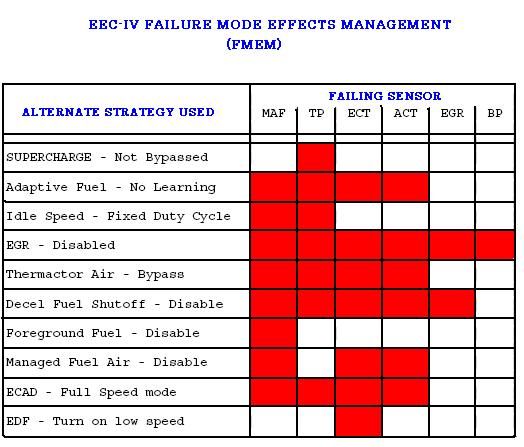



Comment